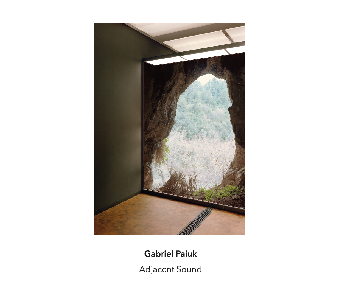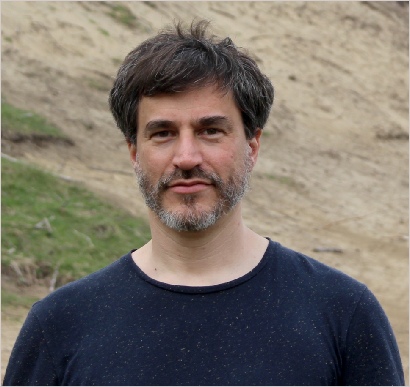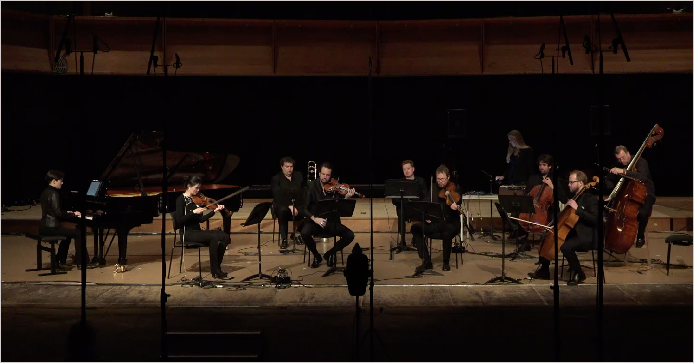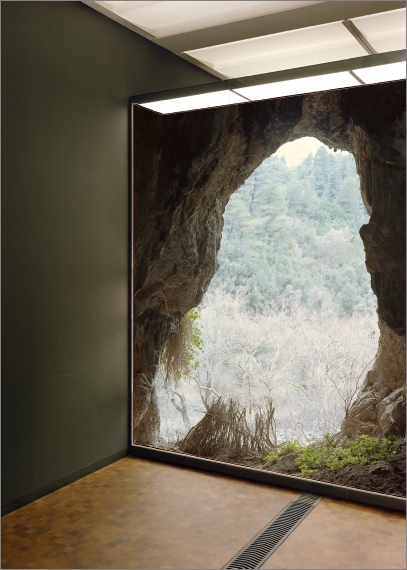Another Timbre TimHarrisonbre

at186 Gabriel Paiuk ‘Adjacent Sound’
1. The Construction of an Imaginary Acoustic Space (2019) 18:55 youtube extract
New European Ensemble Rada Ovcharova & Tijmen Huisingh (violins) Emlyn Stam (viola)
Willem Stam & Matthijs Broersma (cellos) Marijn van Prooijen (double bass)
James Meldrum (clarinet) Sebastiaan Kemner (trombone) Hanna Shybayeva (piano)
2. Disyunción (2014) 9:50
Francesco Dillon (cello)
3. El Mismo (2011) 5:35
Teodora Stepančić (piano)
4. Cuando ya no importe (a Juan Carlos Onetti) (2005) 16:15 youtube extract
Ensemble Modelo62 Anna voor de Wind, Jorge López García & Enric Sans I Morera (clarinets)
Interview with Gabriel Paiuk
Where are you from, where do you live, and how did you come to contemporary music?
I’m from Buenos Aires (Argentina) and live in Amsterdam (The Netherlands) since 2010. Early on, as a pianist, jazz was the spark to engage with music in an intense way, which led further on to a thorough involvement with free improvised music and the exploration of a specific piano-based practice. Although I was also already composing back then, for some years - the early 2000’s - I fundamentally devoted myself to free improvised music, both in Argentina and in different trips and projects in Europe. That period was quite significant in nurturing some of my interests and the approach to sound that I would investigate later on. After this period I felt I wasn’t reaching the results I was looking for through improvisation and decided to focus back more into a compositional practice. In the mid-2000’s I started to get involved with the use of technology and the material interaction between the technologies used to produce acoustic phenomena and the spaces where these are heard.
Why did you leave Argentina and come to Europe?
In 2001 I started to come to Europe more or less regularly for specific projects - at the beginning mostly involved with free improvised music. In 2006 I won the Gaudeamus Composition prize for my work Res Extensa – which was only my second electronic-based work and my first venture into the sound installation domain – and this opened up a window in The Netherlands, which some years later led to the opportunity of a scholarship to carry out a Master’s study at the Institute of Sonology in The Hague.
The truth is that I had not even thought about this possibility in advance, but I was interested in the opportunity of staying for a longer time in Europe after a bit more than 10 years of work in Argentina, playing, composing and organising and setting up concerts and festivals. So I never really fully decided I was going to move out, but after I finished these studies in 2012 and the scholarship ended, I became interested in pursuing some opportunities to continue developing my work in Europe, and I’ve stayed here since then.
Can you say more about why you think improvisation ran out of steam for you?
Even though I was quite attracted by the music I was producing, especially in some of the collaborations I was engaged in, I was finding myself too often thinking – while I was performing – that I wanted the music to go in a different direction. As this thought became more and more frequent it was clear this specific method of music making was not working for me. I have never lost a fascination for some of the music being made through improvisation and I admire many musicians for whom improvisation is evidently the best tool possible. But I realised I was looking for specific temporal and timbral characteristics that I was not achieving through improvisation.
The possibility of focusing on certain listening situations seemed to be more achievable through a compositional path and this also meant acknowledging my thorough attraction by the act of the rehearsal and the possibility to delve into subtle sonorous adjustments that emerge in those circumstances.
I'm not interested in music technologies, and judge things solely by what the resulting music sounds like. So can you explain more about what drew you to explore these technologies, and how you use them?
That’s a very fundamental point, because my work with technology does not arise from a fascination with technologies per se. Rather, what prompted my interest in technology is the fact that it is already embedded in our everyday auditory experience. This means that, through their ubiquitousness in mass-media music and communication, technologies are inherent in the ways we learn to listen. What I’m suggesting here is that microphones, loudspeakers or signal-processing devices are as much technologies as a piano or a violin. They all form how we listen in a certain way, they inform the ways we pay attention to sound or expect sound to behave.
In my work, technologies are not meant as tools or as extensions that enable us to discover “uncharted” territories, but I’m rather focused on interfering or operating on the way these technologies are already part of the sonorous reality we are immersed in.
One example that I delve into in my work is the spatial aspect of the sonorous. I explore this almost with the same criteria in my sound installation work and my pieces for instruments and loudspeakers/electric/electronic sources. On both series of works I draw attention to the way the imprints of recording, reproduction and transduction play a role in how we experience the spatial dimension of sound, and how these processes bear sensitive traces that inform how we engage with it.
How does this play a role in the different pieces on the album?
The four pieces on the CD cover a broad time span. The first piece, which is the most recent, is a clear example of the kind of entwinement between technologies, affect, space and listening that I’ve been working on for a while. This piece plays with the role of different conditions of sound production in shaping the way we pay attention to sound - how we engage in listening to it. In its live version the piece involves other layers which are not present in the recording. This entails both the synchronisation (and non-synchronisation) between the actions of the players and what is heard (produced at points by a digital soundtrack and at points by a tape machine which is operated by a performer on stage)., As well as the material nuances imprinted on the sound by the use of three different stereo set-ups. Each of these three stereo layers diverge in dimension and placement in relation to the audience, and thus bear spatial and material qualities which are inherent in the ways in which we are exposed to sound in our media-saturated environment. The title of the piece is not meant as a statement of purpose, but rather as a question. The aim is to prompt an instability in the ways in which the sound of music triggers a seemingly imaginary realm and to problematise the role of both audio and instrumental tools in informing this process.
‘El Mismo’ can be located along the same path. It deals with the unstable identity of the piano sound as technologies of recording and reproduction have transformed and proliferated what the sound of the piano can be. ‘Disyunción’ does not use any audio technology, but it aso prompts questions concerning our audible engagement with the timbral/material indentity of an instrument and how this unfolds within the performance of memory.
The last and oldest piece - ‘Cuando ya no importe’, from 2005 - can be located at the beginning of an exploration of the material aspects of listening and a fascination with the subtle transformations of the everydaythat I thought Uruguayan writer Juan Carlos Onetti - to whom the piece is dedicated - explores in his texts. What probably captivated me in his writing is the wayminimal gestures of language subtly put into question the identity of what we perceive as the real.


Gabriel Paiuk

Cover image by Taiyo Onorato & Nico Krebs
The New European Ensemble at the recording of ‘The Construction of an Imaginary Acoustic Space’